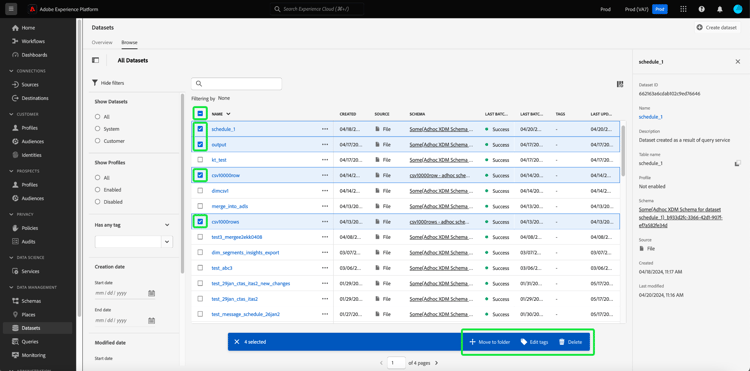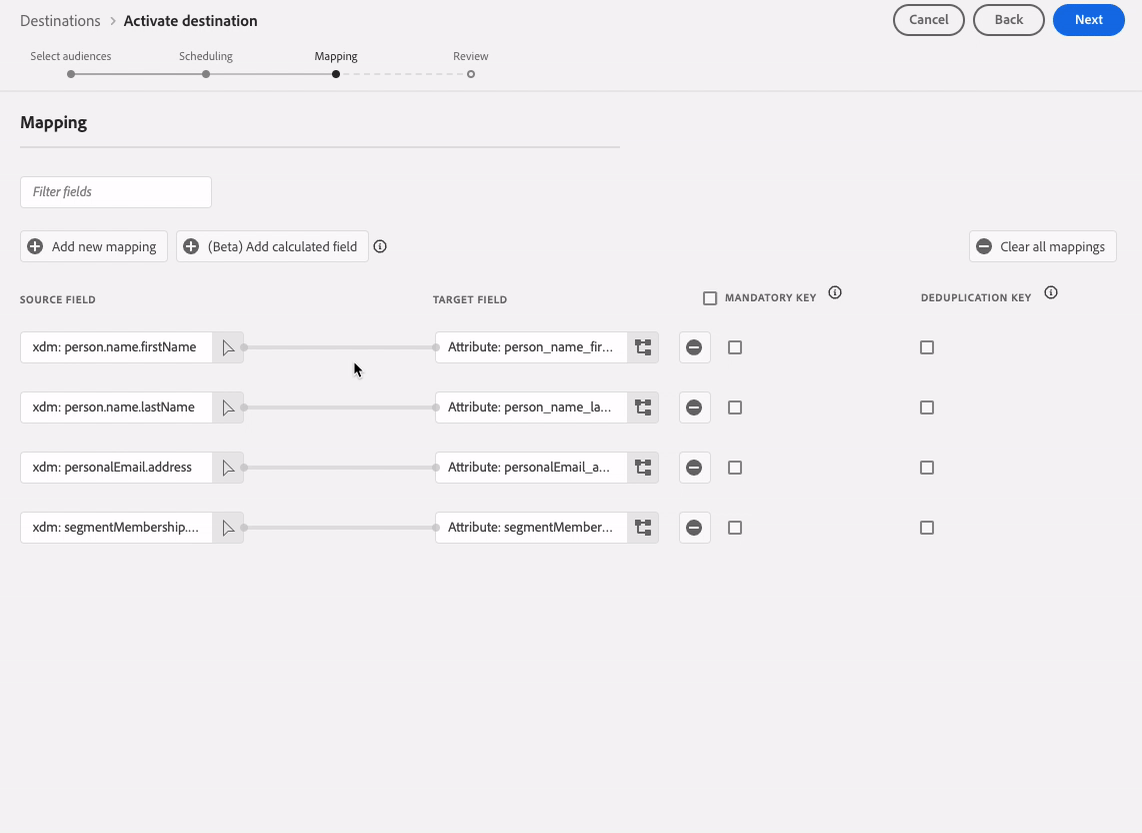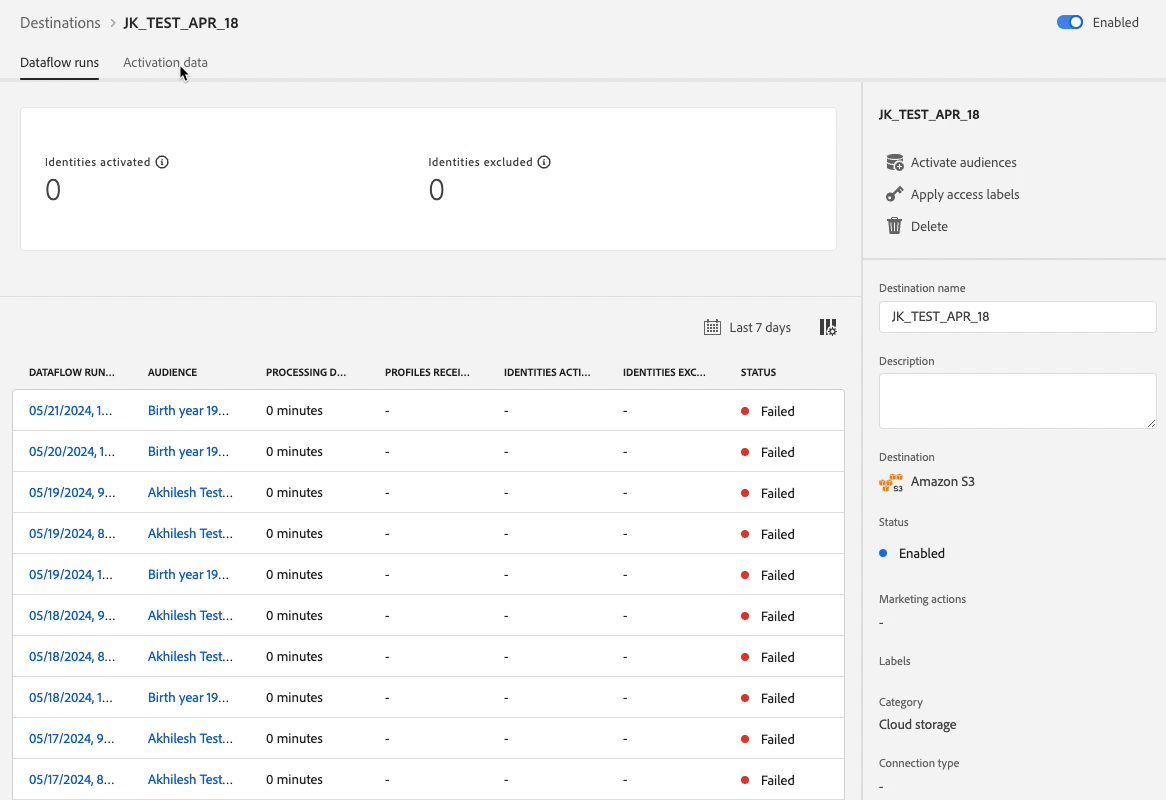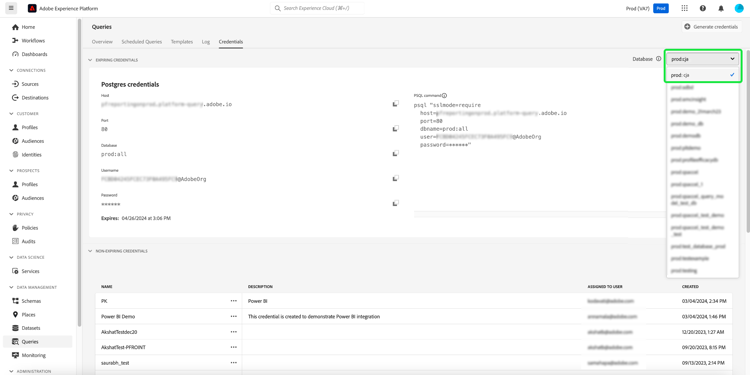Adobe Experience Platform release notes
Release date: May 21, 2024
Updates to existing features in Experience Platform:
Other updates in Adobe Experience Platform:
Catalog Service catalog-service
Catalog Service is the system of record for data location and lineage within Adobe Experience Platform. While all data that is ingested into Experience Platform is stored in the data lake as files and directories, Catalog holds the metadata and description of those files and directories for lookup and monitoring purposes.
New or updated features

For more information about this feature, read the Datasets UI guide.
Dashboards dashboards
Adobe Experience Platform provides multiple dashboards through which you can view important insights about your organization’s data, as captured during daily snapshots.
New or updated features
Data Governance governance
Adobe Experience Platform Data Governance is a series of strategies and technologies used to manage customer data and ensure compliance with regulations, restrictions, and policies applicable to data usage. It plays a key role within Experience Platform at various levels, including cataloging, data lineage, data usage labeling, data access policies, and access control on data for marketing actions.
New features
See the Experience Platform data encryption documentation for more information on network connection protocols when exporting data to third-party systems.
Destinations destinations
Destinations are pre-built integrations with destination platforms that allow for the seamless activation of data from Adobe Experience Platform. You can use destinations to activate your known and unknown data for cross-channel marketing campaigns, email campaigns, targeted advertising, and many other use cases.
New or updated functionality


For more general information on destinations, refer to the destinations overview.
Query Service query-service
Query Service allows you to use standard SQL to query data in Adobe Experience Platform Data Lake. You can join any datasets from the Data Lake and capture the query results as a new dataset for use in reporting, Data Science Workspace, or for ingestion into Real-Time Customer Profile.
Updated features
You can now use an improved troubleshooting efficiency and task monitoring with a streamlined query logs UI:
- The Experience Platform UI now excludes all “System Queries” from logs tab by default.
- View system queries by unchecking Exclude system queries.

Use the streamlined query logs UI for a more focus view that helps you quickly identify and analyze the relevant logs.

Segmentation Service segmentation
Segmentation Service allows you to segment data stored in Experience Platform that relates to individuals (such as customers, prospects, users, or organizations) into audiences. You can create audiences through segment definitions or other sources from your Real-Time Customer Profile data. These audiences are centrally configured and maintained on Experience Platform, and are readily accessible by any Adobe solution.
Updated feature
Sources sources
Experience Platform provides a RESTful API and an interactive UI that lets you set up source connections for various data providers with ease. These source connections allow you to authenticate and connect to external storage systems and CRM services, set times for ingestion runs, and manage data ingestion throughput.
Use sources in Experience Platform to ingest data from an Adobe application or a third-party data source.
New or updated features
New or updated documentation
For more information on sources, read the sources overview.
Documentation updates documentation-updates
Interactive Experience Platform API documentation interactive-api-documentation
The Experience Platform API documentation is now interactive. All the API reference pages now have a Try it .functionality that you can use to test API calls directly on the documentation website page. Get the required authentication credentials and start using the functionality to explore the API endpoints.
Use this new functionality to explore the requests to and the responses from API endpoints, to get immediate feedback and speed up your technical implementation. For example, visit the Identity Service API or the Schema Registry API endpoints to explore the new Try it functionality in the right rail.

Personalized insights and engagement personalized-insights-engagement
A new end-to-end use case documentation page for evolving one-time value to lifetime value is now live. Read this documentation to understand how you can use Real-Time CDP and Adobe Journey Optimizer to convert sporadic visitors to your web properties to loyal customers.